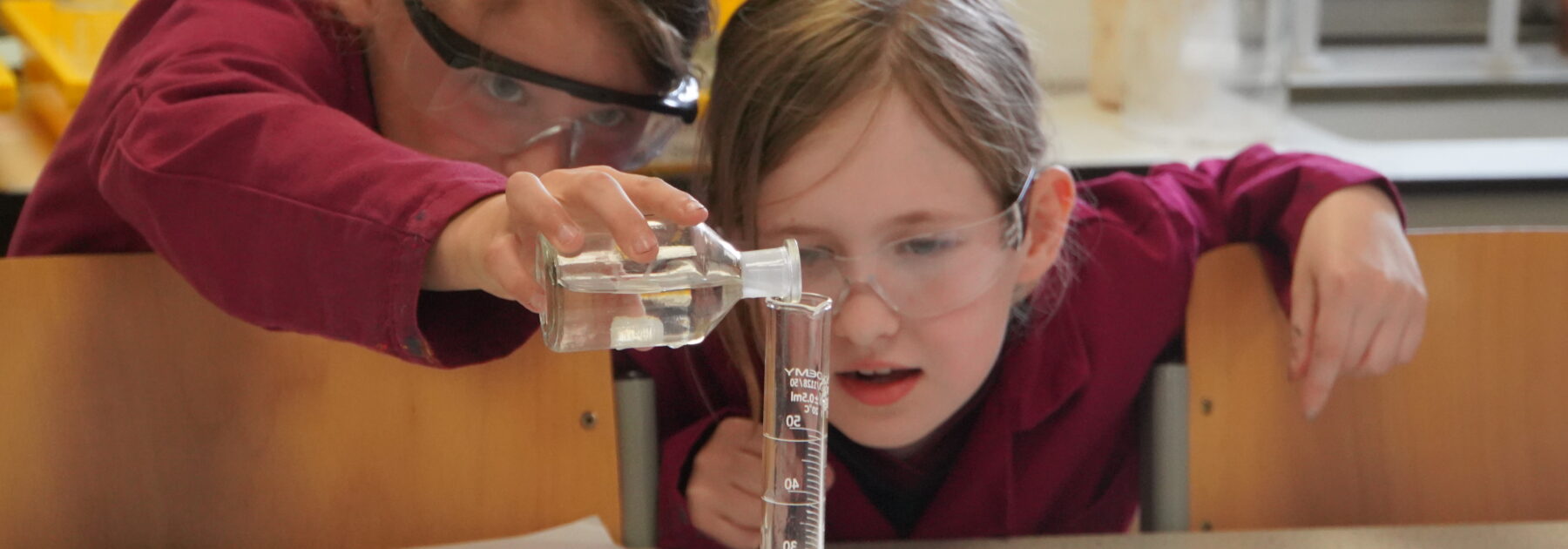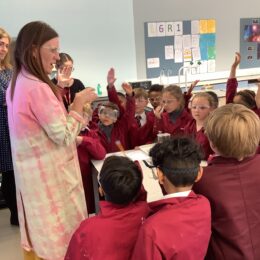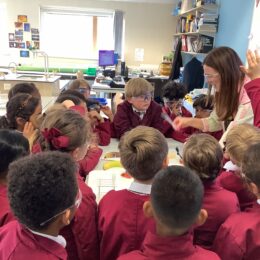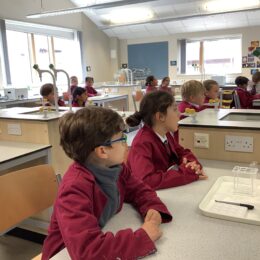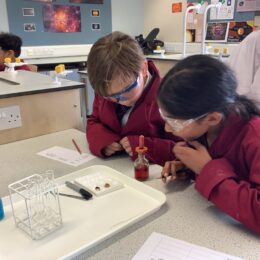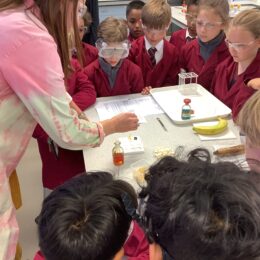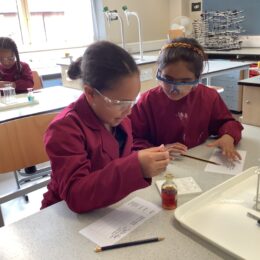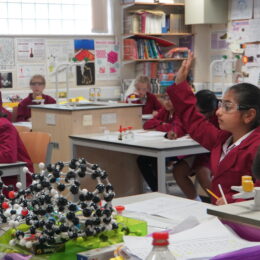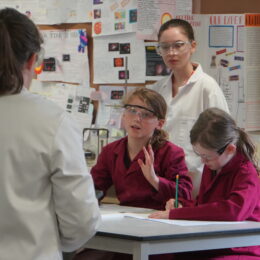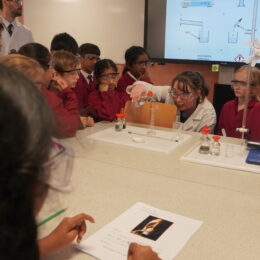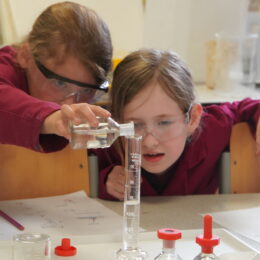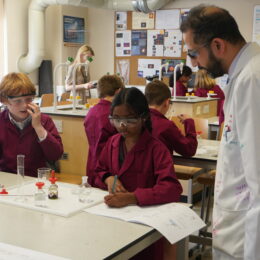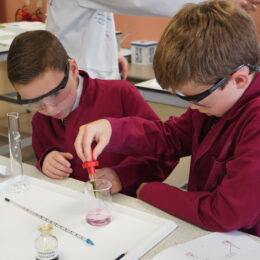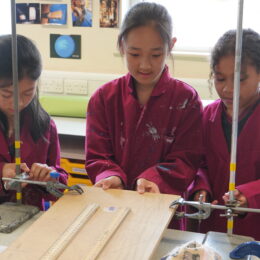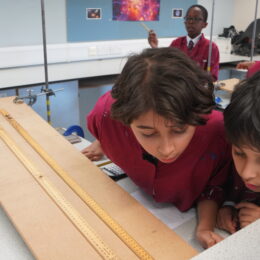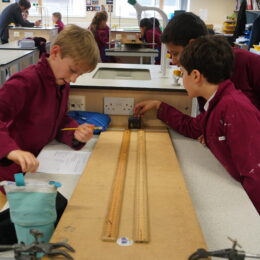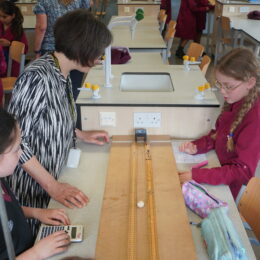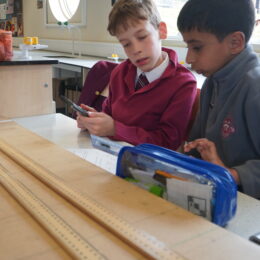Prep Scientists Experiment in Senior Lab Lessons
Years 3, 4 and 5 were fortunate this week to have the doors of the Senior School Science labs opened wide to greet them for a taste of advanced, innovative and fun experiments.
As part of the Prep School Science pupil development, close links are forged with Senior School to give our children the advantages of greater depth, breadth and extended challenges. The Prep Science curriculum, which covers Biology, Chemistry and Physics, is precisely tailored with Caterham’s Senior Science suites so our pupils are ready and prepared for all of the exciting things the Senior labs have to offer.
On Monday, Year 3 had fun with biology finding out what substances were in foods including rice and bananas. They used an orange-brown liquid called iodine to test the foods for starch, and a clear, bright-blue chemical called Benedict’s Reagent to test for sugars. It was exciting to see the colour changes – the iodine went dark blue-black on the foods containing starch. When heated, the Benedict’s Reagent transformed into a thick, opaque orange-red colour if there were any sugars!
Year 4 visited Chemistry and saw some incredibly effervescent displays as mints caused billions of bubbles to erupt and burst free like a geyser from a large bottle of cola! We were being introduced to reactions – where you have two or more chemical reactants coming into contact to make a new product. We were refreshed about the names of safety equipment and what the different apparatus in the lab is called before setting onto looking at how you can tell if a reaction has occurred. Clues include changes of temperature (endothermic = it gets colder / exothermic = it gets hotter), changes of colour, fizzing or bubbling and changes in consistency (eg clear to opaque). We mixed colourful indicators with bicarbonate of soda and acid and measured any changes. Not only did the temperature change, but the colour changed, and it fizzed and bubbled – there was defiantly a reaction!
It was Physics for Year 5 where the laser timing gates were used to measure the speed of a rolling marble. The investigation looked at how the gradient height of a ramp affected speed and then how to calculate speed using the exact distance (measured by two metre rulers) divided by the time taken to travel the ramp (measured by the laser gate).
All hands were on deck in groups to work out how to precisely line up the marble’s starting position, exactly measure the distance and record the time. It was unequivocally proven the steeper the gradient, the faster the marble’s acceleration down the ramp.
Thank you so much to all the Senior School staff in Biology, Chemistry and Physics for giving such an enriching set of investigations to the Prep School children, it was really enjoyable and everyone learned new skills using innovative equipment.
Suzanne Hills-Matthews
Back to all news

